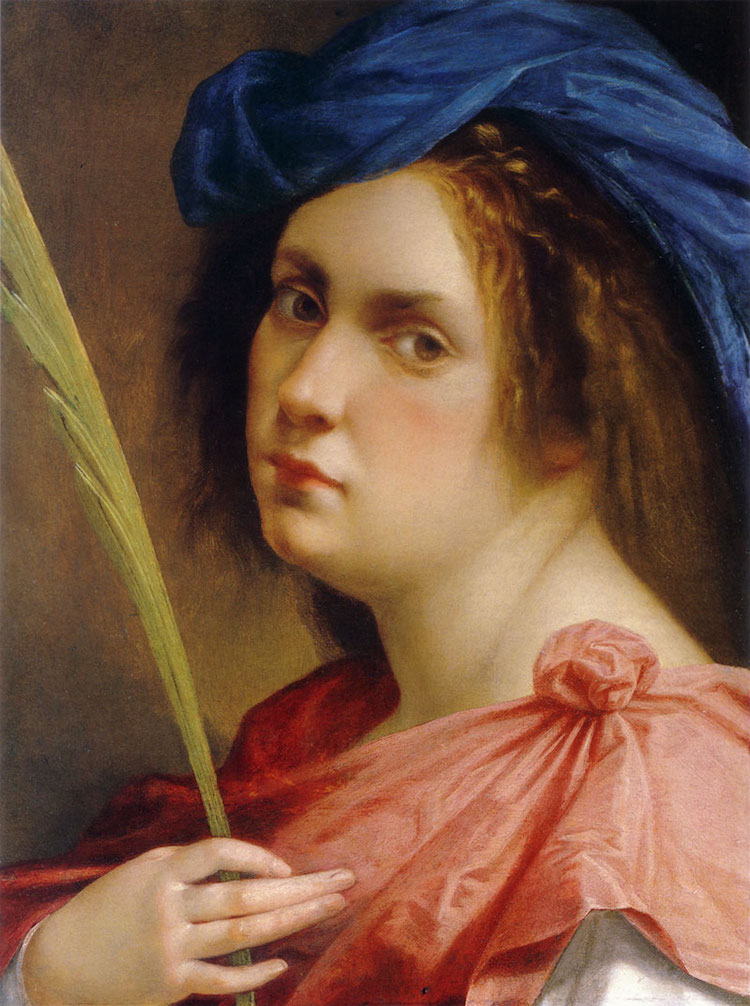
“Self-portrait as a Female Martyr,” ca. 1615 (Photo: Wikimedia Commons Public Domain)
For the sake of convenience, art history's major movements are often associated with single, pioneering figures. The success of Impressionism, for example, is often credited to Claude Monet, while Salvador Dalí is frequently seen as the sole architect of Surrealism. In addition to overly simplifying the complexity of these genres, however, this system of attribution is flawed, as female artists are rarely included in the running.
A prime example of an overshadowed female painter is Artemisia Gentileschi. Though born into an artistically accomplished family and even accepted into a prestigious art school, she has historically been overlooked in favor of Caravaggio, a contemporary painter attributed with spearheading the Baroque movement.
Fortunately, today, more and more museums, art history books, and other communicators of culture are beginning to shine a light on this overshadowed figure—and the powerful stories behind her most celebrated paintings.
Here are five of Artemisia Gentileschi's most important masterpieces.
Susanna and the Elders (1610)
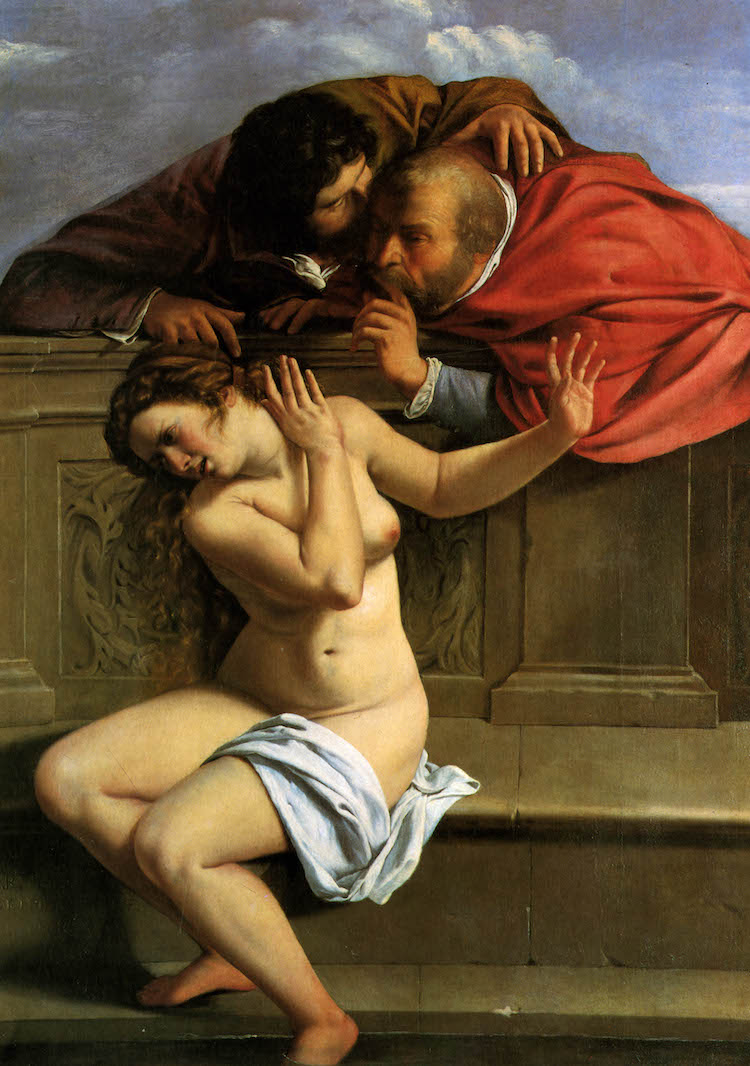
“Susanna and the Elders,”c. 1610 (Photo: Wikimedia Commons Public Domain)
In 1593, Artemisia Gentileschi was born in Rome. With famed Tuscan painter Orazio Gentileschi as her father, Gentileschi was exposed to art at a young age. As a teenager, she worked alongside her father in his studio, where she learned the fundamentals of painting and completed Susanna and the Elders, her earliest known work of art.
Completed when Gentileschi was just seventeen years old, this large-scale painting depicts a biblical scene. It shows Susanna, a married Hebrew woman, being harassed and attacked by two men while bathing. After refusing to have sexual relations with the assailants, Susanna is blackmailed and falsely put on trial for adultery. However, her husband, Daniel, points out the unfair nature of the accusation, and, in turn, the accusers are cross-examined. After failing to come up with matching stories, the men are put to death.
Gentileschi rendered this scene in what would become her signature style: a realistic approach to female anatomy, a deep color palette, and skilled use of light and shadow. Most prominently, however, it laid the groundwork for Gentileschi's eventual preferred subject matter: suffering yet strong female figures from mythology, the bible, and allegorical tales.
Judith Slaying Holofernes (1614–1620)
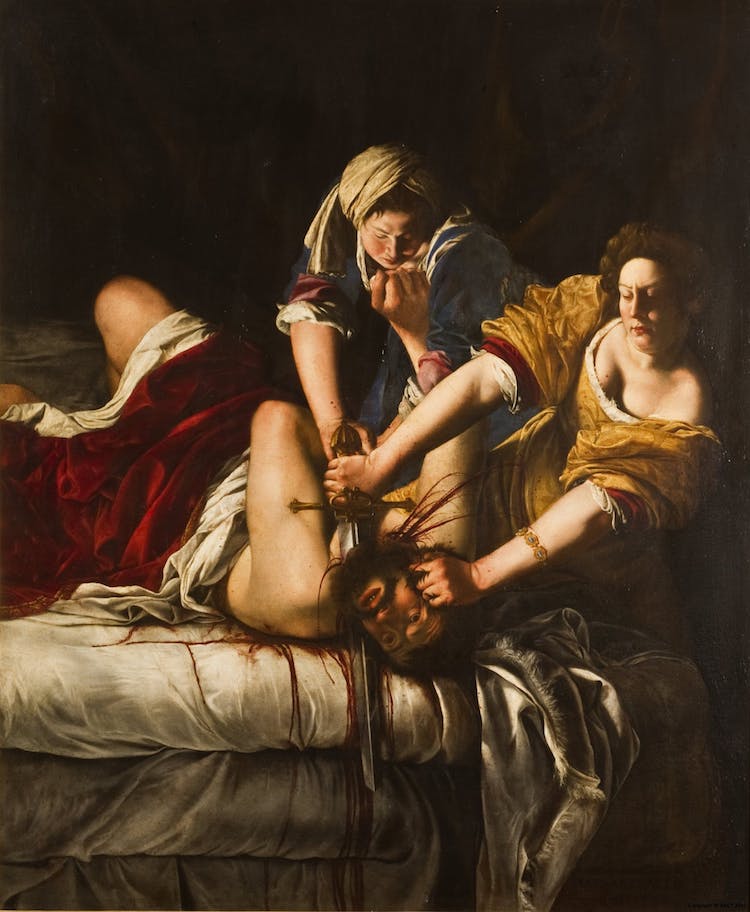
“Judith Slaying Holofernes,” 1614-1620 (Photo: Wikimedia Commons Public Domain)
Gentileschi's long-term focus on female subjects was further shaped by an event that occurred the same year she completed Susanna and the Elders. In 1610, her father was collaborating with Agostino Tassi, a fellow Italian artist, on a project in Rome. During this time, Tassi raped the 17-year-old, prompting her father to press charges. While Tassi was exiled for his behavior—which also included separate charges like theft and intent to murder—his sentencing was never carried out.
Gentileschi, however, sought her own form of revenge. In 1610, she painted Judith Slaying Holofernes, a piece portraying an Old Testament story in which a widow and her maid overpower—and eventually behead—a lustful, threatening man. Given the timing of the painting's completion, many believe that Gentileschi channeled her own sexual assault (and consequent feelings toward Tassi, represented by a bleeding Holofernes) when crafting the composition.
In 1614, Gentileschi returned to this theme, producing a second copy of Judith Slaying Holofernes. With a more vivid color palette and increased contrasts between light and dark, this later work would eventually typify her entire oeuvre.
Judith and Her Maidservant (1625)
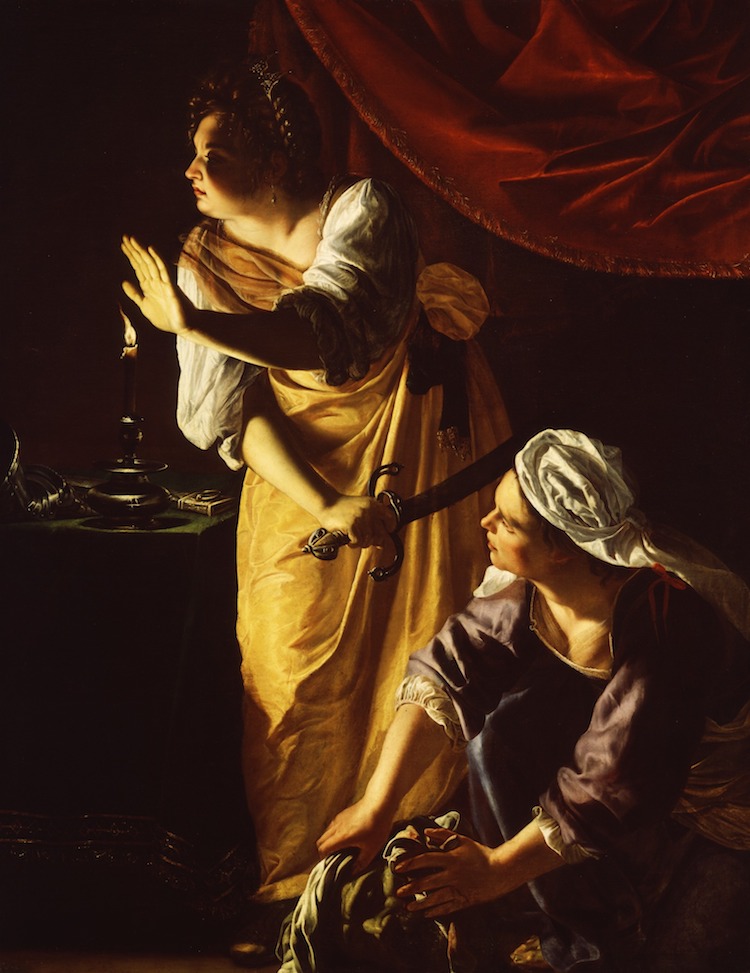
“Judith and Her Maidservant,” 1625 (Photo: Wikimedia Commons Public Domain)
Between 1623 and 1625, Gentileschi again revisited the story of Judith. In Judith and Her Maidservant, she captures the moment after the murder, when the heroine and her maid place the decapitated head of Holofernes in a bag.
While Judith Slaying Holofernes is predominantly celebrated for Gentileschi's radical approach to the subject matter, Judith and Her Maidservant is mainly praised for her treatment of light and shadow. On top of accentuating the rich tones found in Judith's golden dress and the red velvet curtains, this use of light heightens the drama of the scene and, ultimately, showcases Gentileschi's mastery of a quintessentially Baroque skill.
Lucretia (1625)
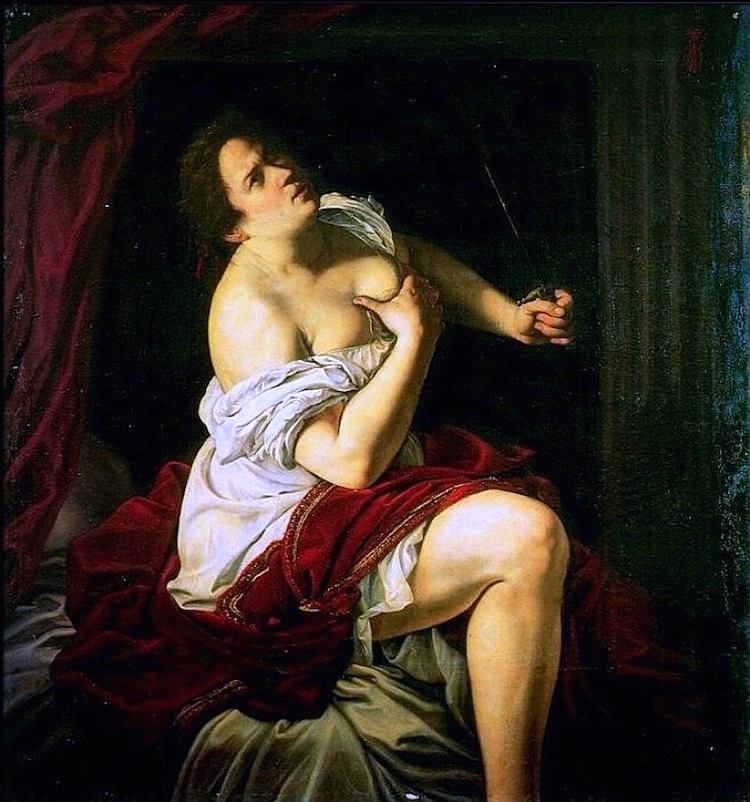
“Lucretia,” 1625 (Photo: Wikimedia Commons Public Domain)
Gentileschi's depictions of Judith would not be the last example of the artist exploring the effects of sexual harassment and rape in her work. In 1623, she painted Lucretia, a work that features a female figure on the brink of suicide. Specifically, it depicts Lucretia, a real-life Roman noblewoman, who opted to take her own life after being raped by Sextus Tarquinius, the son of an Etruscan king.
While plenty of painters have found a muse in Lucretia, Gentileschi's rendition (completed in 1625) is described by famed art historian Mary Garrard as “the most unusual and the most radical variation of the subject in early modern painting.” This assessment is primarily due to Gentileschi's strategy of depicting the moment just before Lucretia resolves to kill herself—not, as in the case of many other paintings, the suicide itself.
Though unprecedented, this decision falls in line with Gentileschi's approach to such subject matter, as Lucretia, secure in her convictions, is depicted as a “femme forte, a strong heroine.”
Self-Portrait as the Allegory of Painting (1638–1639)
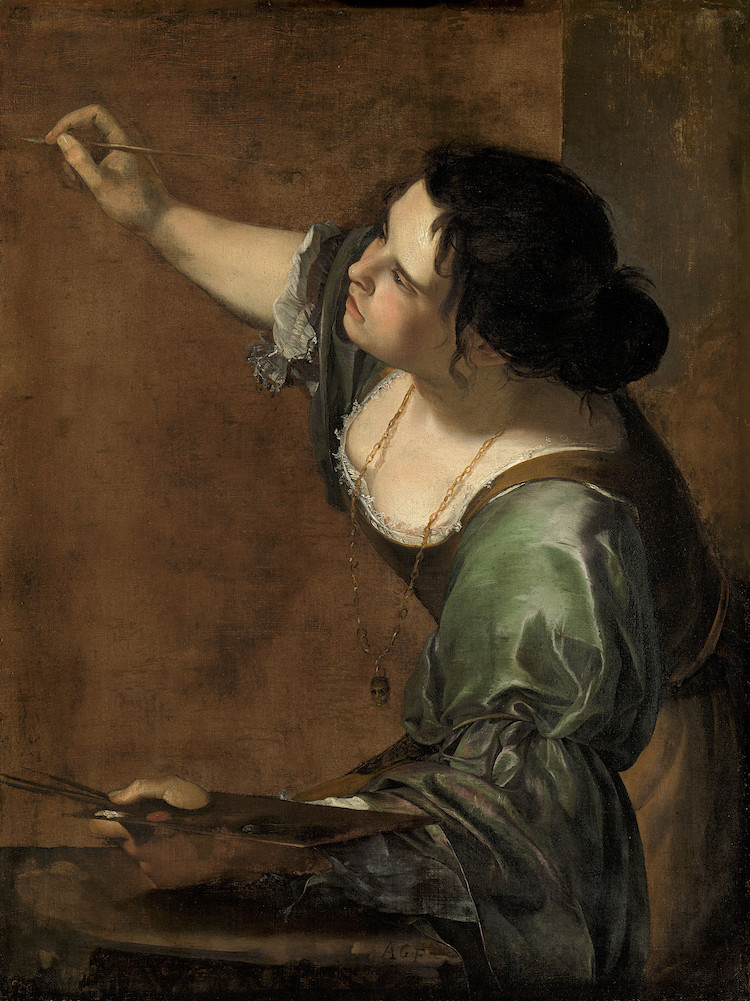
“Self-Portrait as the Allegory of Painting,” 1638-1639 (Photo: Wikimedia Commons Public Domain)
Gentileschi's penchant for painting women was not limited to age-old bible stories and ancient tales. In fact, she sometimes found inspiration in a contemporary figure: herself.
In 1639, Gentileschi completed her most celebrated self-portrayal, Self-Portrait as the Allegory of Painting. In this unique painting, the artist imagines herself as an allegory—a creative approach that subtly incorporates her long-held feminist views. “She holds a brush in one hand and a palette in the other,” the Royal Collection Trust explains, “cleverly identifying herself as the female personification of painting—something her male contemporaries could never do.”
Related Articles:
Online Database Features Overlooked Female Artists from 15th-19th Centuries
How Berthe Morisot Broke Barriers to Become the First Female Impressionist
How Female Painter Mary Cassatt Became an Important Impressionist Figure






















































































